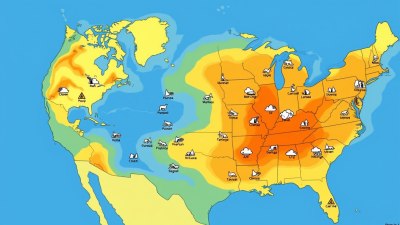Why Does the Wind Always Blow Harder When You Try to Use an Umbrella
Ever noticed that the moment you open an umbrella, the wind seems to go into overdrive? Discover the science and psychology behind this frustrating phenomenon.

This image was created with the assistance of DALL·E
Is the Wind Really Stronger When You Open an Umbrella? It’s a universal experience: You step outside into light rain, open your umbrella, and suddenly—whoosh!—a strong gust of wind nearly rips it from your hands. Is it just bad luck, or is there some scientific reason why the wind always seems to get worse when you’re holding an umbrella?
The answer lies in a mix of physics, meteorology, and a little bit of psychology.
The Science of Wind and Obstacles
Wind isn’t just a constant force—it reacts to objects in its path. When you open an umbrella, you create a new obstacle that disrupts the flow of air. Here’s what happens:
- Wind Deflection: Your umbrella acts like a sail, redirecting wind around it and sometimes funneling it into even stronger gusts.
- Increased Air Resistance: The larger the surface area of your umbrella, the more air it catches, making you feel like the wind is pushing harder.
- Vortex Effects: As wind flows around the curved shape of your umbrella, small whirlwinds or turbulence can form, causing sudden, unpredictable gusts.
Essentially, your umbrella isn’t just reacting to the wind—it’s changing how the wind behaves around you.
Why Wind Gusts Seem to Target Your Umbrella
Wind doesn’t blow at a constant speed. Instead, it comes in gusts—short bursts of stronger wind followed by calmer moments. You might not notice these gusts when walking in the rain without an umbrella, but the moment you pop one open, it feels like the wind is picking a fight.
Why? Because:
- Umbrellas are lightweight: They amplify the effect of sudden gusts, making them more noticeable.
- Wind tends to be stronger in open areas: Streets, sidewalks, and city spaces create wind tunnels, making gusts more extreme.
- Psychological bias: When struggling with an umbrella, you focus more on the wind’s strength, making it seem worse than it actually is.
The Urban Wind Tunnel Effect
Ever notice that wind seems much stronger in cities? That’s because of the urban wind tunnel effect. When wind moves through narrow spaces between buildings, it accelerates—just like water speeding up when forced through a small pipe.
If you’re using an umbrella in a city, expect sudden, forceful gusts due to:
- Channeling between buildings: Streets act as natural funnels, increasing wind speed.
- Updrafts and downdrafts: Wind bouncing off tall buildings can create unpredictable gusts.
- Sudden direction changes: Wind in cities doesn’t just blow one way—it swirls and shifts rapidly.
So, if your umbrella flips inside out while walking downtown, blame aerodynamics, not just bad luck.
Physics and the “Sail Effect”
Your umbrella works like a mini parachute. The larger and rounder the canopy, the more air it catches. This creates drag, making it feel like the wind is fighting against you. In extreme winds, an umbrella can even act like a wing, lifting you slightly or pulling you off balance.
That’s why compact, low-profile umbrellas tend to hold up better in strong winds than big, flimsy ones.
How to Stop Your Umbrella from Turning Inside Out
Want to avoid the dreaded inside-out umbrella disaster? Try these tips:
- Use a vented umbrella: These have small openings that allow wind to pass through, reducing resistance.
- Point your umbrella into the wind: Holding it at an angle instead of straight up helps deflect gusts.
- Keep a firm grip: Hold your umbrella lower on the handle for better control.
- Choose a wind-resistant model: Some umbrellas are designed to flex without breaking.
While it may feel like the universe is out to get you, the wind isn’t actually stronger when you open an umbrella—it just feels that way due to aerodynamics, gust patterns, and urban wind tunnels. But with a little knowledge (and a sturdy umbrella), you can stay dry and keep your umbrella from becoming another casualty of the weather.











